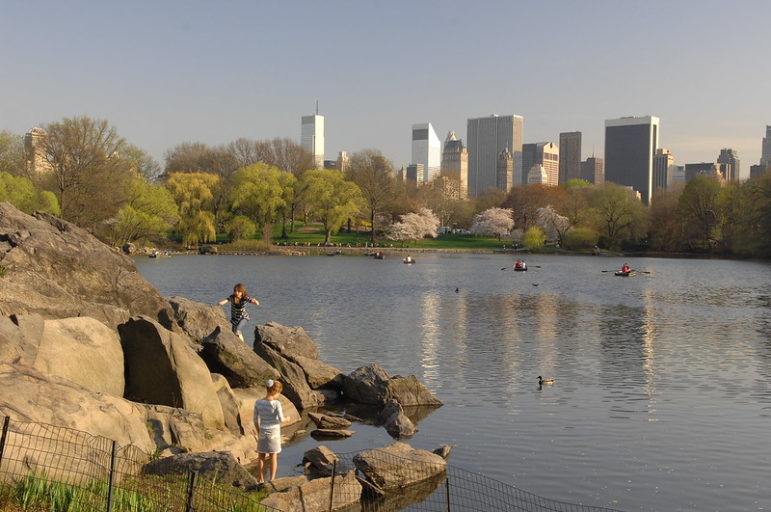The Central Park Climate Lab will start data collection this spring to examine how extreme weather could affect the park’s plants and wildlife.

Daniel Avila/NYC Parks
Central ParkCentral Park will set the stage for research into the effect of climate change on urban green spaces.
This week, the Central Park Conservancy announced a partnership with the Yale School of the Environment and Natural Areas Conservancy to collect and map data that would give an understanding of how Central Park is impacted by climate change and extreme weather.
The researchers will later implement the methodology at parks in other U.S. cities.
The project, called the Central Park Climate Lab, will start data collection this spring and will employ four individuals — one at each nonprofit and two at Yale, according to Sarah Charlop-Powers of Natural Areas Conservancy.
“In dreaming up this project, we wanted to make sure that we used it as a springboard to look at a lot of other parks across the country,” said Karen Seto, a professor of geography and urbanization science at Yale School of the Environment and one of the scientists spearheading the research.
She adds that the increased use of parks since the pandemic has highlighted the need to protect green spaces in urban areas from the impacts of extreme and changing weather. Last year, New York City experienced multiple record-breaking heat waves and rainfall events. These incidents can lead to increased algae blooms and impact the health of the park’s tree canopy and wildlife — at the same time that people are relying more on green spaces. In 2021, use of the city’s open spaces increased by 65 percent, according to Charlop-Powers.
“It’s really clear that we’re expecting so much from our city parks these days, and I think the pandemic really showcased that people are going to the parks for a lot of different reasons — for health, for social reasons or spirituality,” said Seto. “But if we think about climate change, parks are in many ways at the frontlines.”
In addition to providing a respite, parks play an important role in absorbing urban heat and offering other natural resiliency protections, Charlop-Powers added.
Seto will use satellite remote sensing to detect not only species that are failing to survive but also shifts in flowering and greening. Meanwhile, her colleague Mark Bradford at Yale will look at soil samples for changes in moisture or other variables for a top-to-bottom view of how the park’s ecosystem is coping with changing weather, she explained.
“There’s like an old adage that soil is destiny,” said Charlop-Powers.
She hopes this collaboration can help to inform how Mayor Eric Adams’ administration prioritizes the city’s parks and green spaces.
Adams, who previously promised to commit 1 percent of the city budget to parks and to ensure that all New Yorkers live no more than 15 minutes from a park, commented on the project in a press release saying the project “begins a new era in research and cooperation that will give our park professionals improved tools to combat the climate crisis, and it will be a model for urban parks across the country.”
Charlop-Powers said she is hopeful the research will lead to tangible investments in the parks system.
“We’re really excited about both the research aspects of this work but also the ways that that research can really inform public policy and public spending,” she said. “As an organization, we really sit at the nexus of research and policy and so it feels like kind of a dream project in that it has the ability to really inform both.”
Liz Donovan is a Report for America corps member.









